I hadn’t heard that much about Bulgaria before I visited the country in September 2018 with my dog, Schnitzel. But between it’s beautiful coastline, magnificent mountains and plenty of history, not to mention cheap prices, it won me over.
It’s not the most dog-friendly country in Europe, but it’s still a great destination to visit with your pup, particularly if you’re looking for an affordable destination in summertime. I give you the lowdown on what to expect when travelling in Bulgaria with a dog…
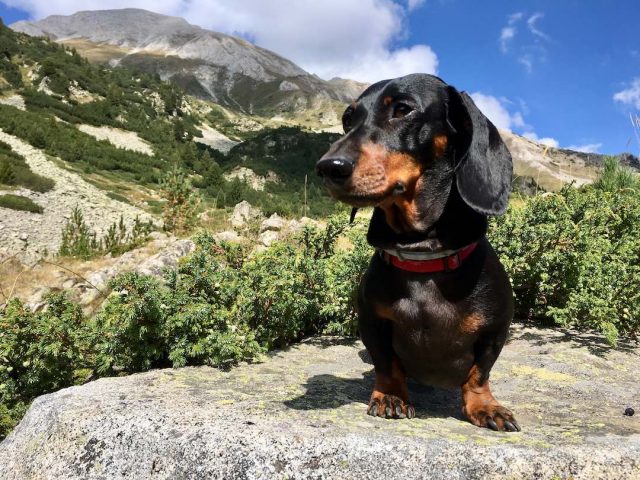
Travelling to Bulgaria with a Dog
The standard EU rules apply to travelling to Bulgaria with your dog, whether from another EU country or from outside of Europe. Your dog will require at least a microchip, valid rabies vaccine and EU pet passport or EU health certificate.
If you are travelling to Bulgaria with your dog from Serbia, North Macedonia or Turkey, the rules are similar to those for travelling from outside of Europe. An EU animal health certificate or is required if you don’t have a pet passport from the EU or a related country.
Additionally, a rabies titre test is required for dogs travelling from Serbia and Turkey. This needs to be done three months in advance, or before leaving the EU with your dog, if you are initially from an EU country. A rabies titre test isn’t require for dogs travelling from North Macedonia.
If driving into Bulgaria from these non-EU countries, you are required to enter the country at a valid “Travellers’ points of entry”, where your dog’s paperwork can be checked. The list of possible entry points to Bulgaria can be downloaded here.
In my experience, my dog’s passport wasn’t checked when I drove across the border into Bulgaria from other EU countries. I have also heard that sometimes passports, plus the rabies titre test, isn’t checked when driving into Bulgaria from non-EU countries. However, always be prepared.
Dining Out in Bulgaria with a Dog
We didn’t try and dine indoor at restaurants in Bulgaria with our dog – I don’t think it’s the done thing. Although there’s probably not a rule against it, and it’s likely up to the decision of the manager.
If it was winter time, I’d give it a try, but we visited in late summer with sunshine each day. We instead dined at some outdoor terraces with our dog without an issue. Although once or twice we left our dog behind as we wanted a quiet meal without the interruption of him spotting nearby cats!

Taking a Dog on Public Transport in Bulgaria
Dogs are allowed to travel on trains in Bulgaria, with some rules and restrictions, but it’s not as clear whether dogs are allowed to travel on other forms of public transport.
In Bulgaria, the trains are operated by BDZ and their rules for pets are listed here. Smaller pets in a waterproof container can be transported on the floor or your lap in 2nd class coaches, without needing a ticket. Although, if other passengers object to them, you need to retreat to the entry lobby.
Larger dogs require a half-price second-class ticket, and can only be transported in the entry lobby of the last coach on a train, wearing a muzzle and accompanied by a veterinary certificate. Additionally, dogs are not allowed in sleeping, couchette or dining cars.
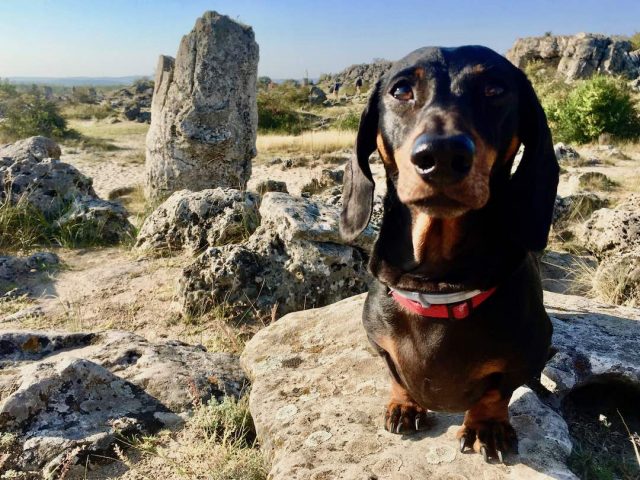
The rules are similar for pets on mass public transport within Metropolitan Sofia. Small dogs in a carrier bag or box are allowed free of charge, with no ticket required.
For larger dogs, they require a single ride ticket or prevalidated paper card, plus you should carry their registration papers. (I expect a foreign pet passport would be sufficient.) It is likely that muzzles are expected for larger dogs.
Dog-Friendly Accommodation in Bulgaria
Note: This post contains affiliate links, which means I may receive commission if you make a purchase using the links. See my full disclaimer.
While in Bulgaria, we stayed in a range of accommodation, ranging from Airbnb apartments to budget guest houses to a 4-star hotel. What each of the hotels had in common was that we weren’t charged an additional fee for having a dog at any of them. (There are still some hotels that charge, but it seems less frequent.)
Hotel prices in Bulgaria aren’t quite as cheap as in Romania, but are still amongst the cheapest in Europe. During our visit to Ruse near the Romania border we stayed at the lovely 4-star Grand Hotel Riga which I recommend.
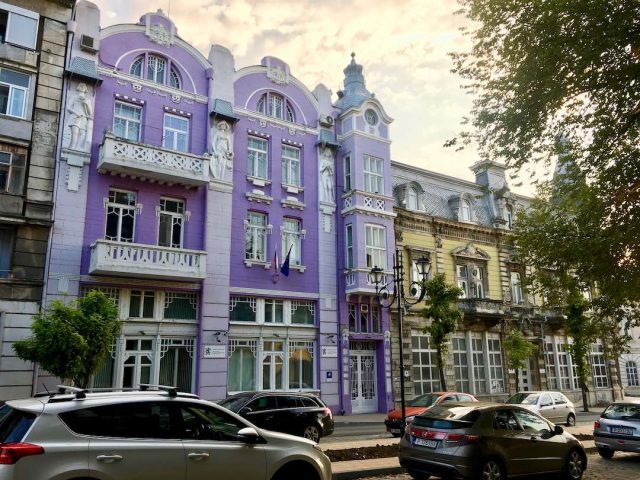
We also found great value in Airbnb apartments. Search on Airbnb for the latest selection of pet-friendly apartments. Note that accommodation in Sofia tends to more expensive than in the rest of the country.
Dog-Friendly Sightseeing in Bulgaria
During our time in Bulgaria, some of the sightseeing stops that we wanted to do didn’t allow dogs, from the famous Rila Monastery to the well-protected ancient tombs scattered around the country (some of which require human visitors also to visit a replica).
But there are plenty of dog-friendly options available, in particular if you are exploring the natural beauty of the country, from the coastline along the Black Sea to the mountains of Bansko to the many forests.
1. Visit the Black Sea Coast
Bulgaria is blessed with some beautiful beaches along the Black Sea coast. Compared to elsewhere in Europe, prices are more reasonable and crowds are less of an issue, at least when we visited in early September.
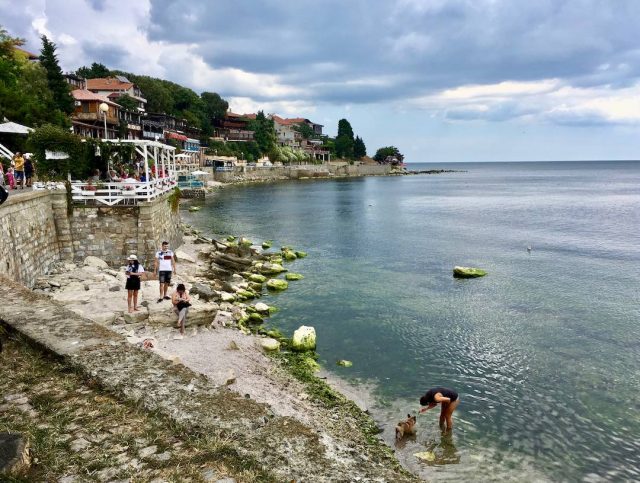
The seafood on offer is also the cheapest we found in Europe, and of an excellent quality. Consider feasting on a seafood platter while dining at an outdoor terrace along the coast, accompanied by some fine Bulgarian wine.
I didn’t notice any signs forbidding dogs from beaches, at least the few that I visited in Bulgaria. I would guess that dogs are forbidden from the more popular beaches (at least during the day over the summer months), but smaller beaches without amenities may allow dogs.
Keep an eye out for what the locals are doing if you are unsure, and of course always clean up after your dog.
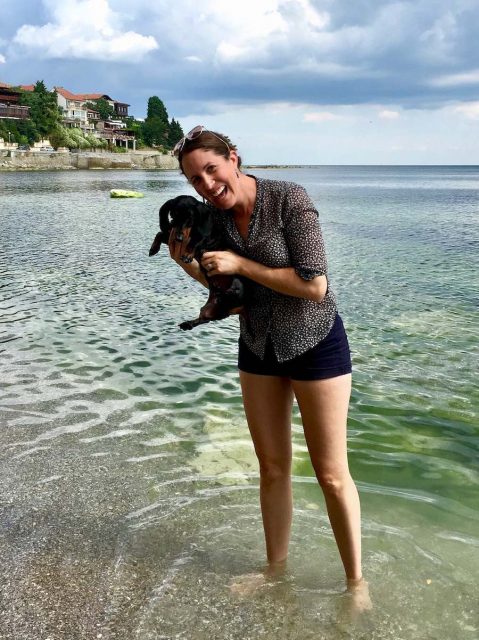
2. Explore the Mountains around Bansko
Bulgaria is also endowed with some beautiful mountain scenery, including the mountains around the ski resort of Bansko. Just a few hours south of Sofia (and not far north of the Greek border), this is the premier ski resort in Bulgaria but in summer time is popular as a hiking destination.
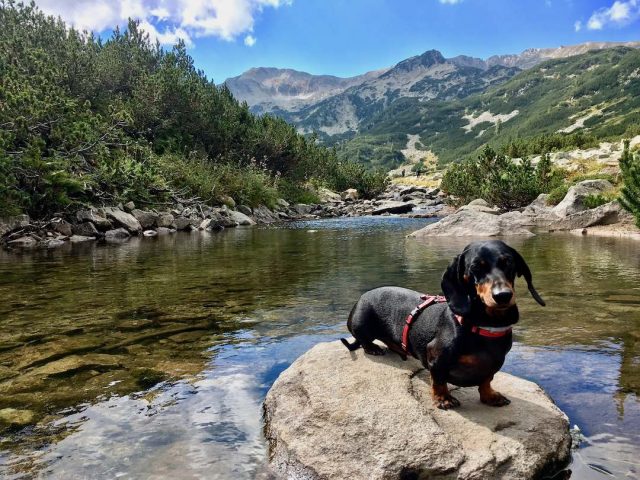
We visited in September, meaning that it was off-peak season, although still snow-free for hiking. We drove all the way up the road behind Bansko, past the gondola lift, to Vihren Chalet. (During the peak summer season, I believe the latter part of the road is closed to regular vehicles.)
From there we complete a short hike along one of the hiking trails to Okoto Lake, a pretty spot and perfect for a picnic. It’s also possible to complete a longer hike from further down the hill, at the top of the gondola lift.
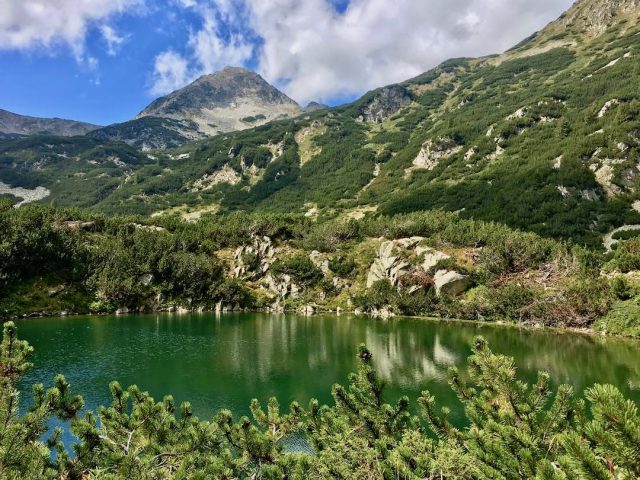
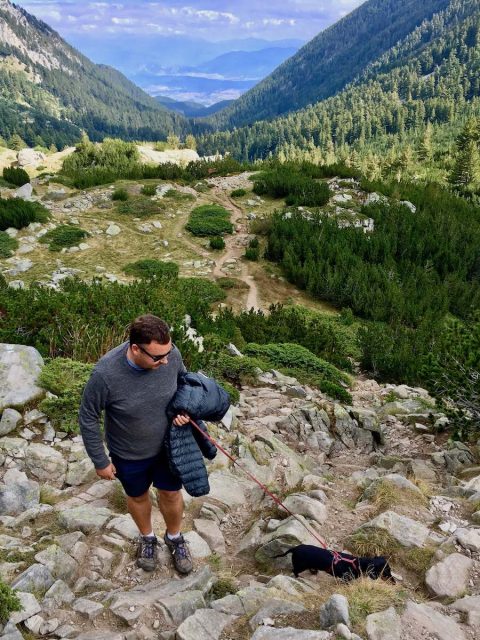
3. Head to Historic Nessebar
Nessebar is an ancient city located on a peninsula along the Black Sea Coast. Dating back to the Thracian and Ancient Greek eras, the town’s many churches primarily date from the 5th-century onwards. These days it’s a UNESCO World Heritage site, popular for both its historic sites and many souvenir shops.
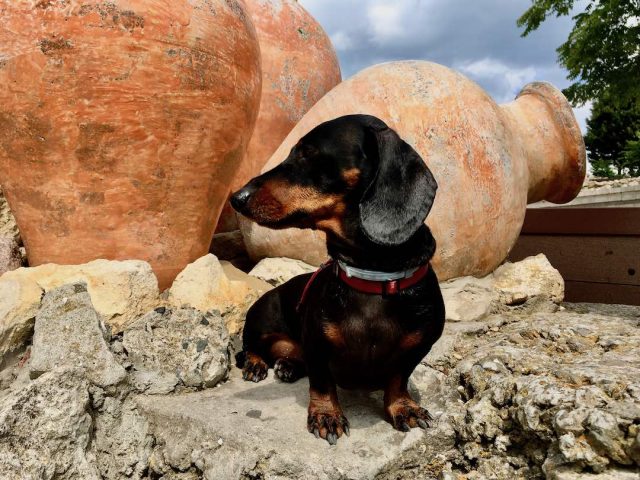
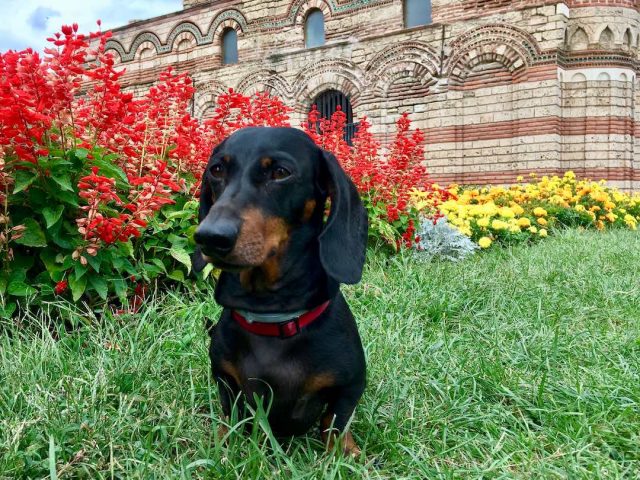
Don’t miss the remains of the ancient theatre and the ruined open-air skeleton of the Church of Saint Sophia, both fine to visit with a dog.
We also recommend also stepping inside St Stefan’s with its frescoes; our dog was fine to enter the churchyard and we took turns stepping inside. (I recommend skipping buying the combo-ticket though, if you’re sightseeing with your dog.)
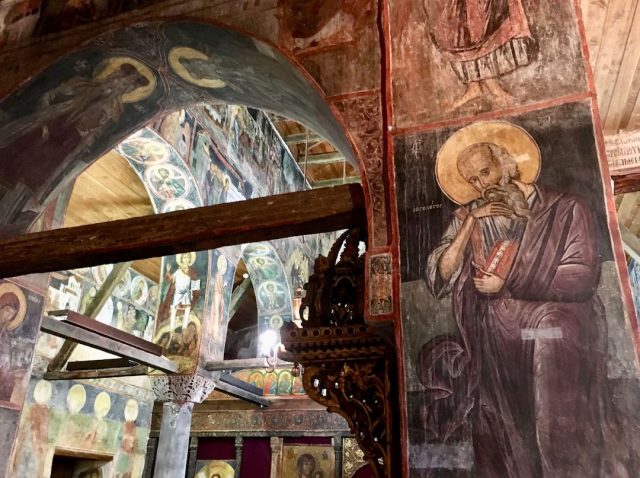
4. View the Madara Rider
Another UNESCO World Heritage site in Bulgaria that’s ideal to visit with a dog is the Madara Rider. It’s a large rock relief carving of a horseman triumphing over a lion, on the side of a cliff about an hour inland from Varna. You may recognise it from some of the Bulgarian coins.

The carving dates from the early medieval period, either the late 7th or early 8th centuries, and the relief has no parallel across Europe. It’s almost life-size, but it’s hard to appreciate how large it is as you can only view it from the bottom of the cliff. Don’t miss spotting the dog just behind the knight’s horse.
Stray Dogs and Cats in Bulgaria
Just like I noted in my posts on Romania and Greece, you will likely come across stray dogs and cats in Bulgaria. Although, I personally thought that there were less stray dogs in Bulgaria than in Romania, and less stray cats in Bulgaria than in Greece.
I found that the stray dogs tended to be timid and easily scared off, but you should still keep an eye out for them. If your dog doesn’t like cats, you’ll probably have more of an issue with stray cats.
In particular, if you’re dining out, I often noticed stray cats around outdoor restaurant areas. Make sure your dog is kept on a leash so they don’t try to give chase in the middle of your meal!
You May Also Like
About the Author

Shandos Cleaver is the founder of Travelnuity: Dog-Friendly Travel. She has travelled extensively with her Miniature Dachshund, Schnitzel, including to 33 countries across Europe, every state and territory of Australia except Tasmania, and 10 of the United States. She’s passionate about providing inspiration and information to others wanting to travel with their dogs, whether close to home or internationally.
Inspired? Pin this to your Pinterest board!
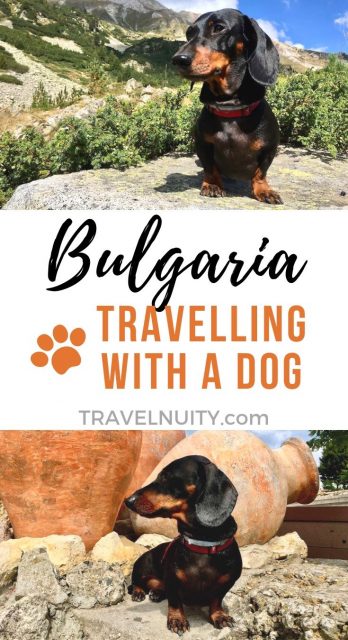

Hi, I am looking to travel from Lisbon to the Black Sea with my 70 pound Malinois. Thanks for your insights.
That’s great to hear, have a wonderful trip!
Thanks for the info, I’m considering a jaunt in Bulgaria with the dog in 2022. Very useful.
Great to hear, all the best!
Hi, I’m from Ruse, Bulgaria. So nice to hear you like it in our town 🙂
Thanks Valentina!
Is it difficult to find apartments in Sofia that will allow a dog?
Nancy – I had no troubles finding an apartment, but this was pre-COVID, so I recommend researching in advance to check what it’s like now.
Hi,
I really love your site, it’s so useful:-)
I’ve travelled with my tiny papillon, Ella, in Bulgaria several times.
We are always allowed to eat inside restaurants, if we ask.
Thanks for the info Helle!
What are the conditions to visit Bulgaria with a small dog but without a car? I have read on travel with dog but I need to know more about the options of visiting public places and sights – are they pet friendly?
Sorry, but we only visited Bulgaria with a car, not by public transport, and the information is a little vague about dogs on public transport other than trains. We found plenty of dog-friendly attractions, but also many attractions will not allow dogs.
Hiya
Love your site, thank you! That’s all most helpful.
Looking to go to Bulgaria to collect an adult dog, driving there and back.
When you drove do you have any advice or tips please? Any Countries a ‘lone female’ driving should ‘avoid at all costs’ please? Or any other tips, or advice please?
Google says 26hrs driving, but that I assume isn’t taking into account any border checks? I see there could be a number of tolls, can they be paid by credit card please?
I think if the car had issues train return would be an option from what I can tell.
Warmest regards. C A 😀
Many European countries have a vignette that you’ll need to buy just across the border, that will cover the cost of highways, rather than paying individual tolls. I don’t recall all of them, because usually when we rented cars, they already had a vignette for that country. This website has more info: https://help.indiecampers.com/hc/en-us/articles/5409869834897-What-is-a-Vignette-in-which-country-do-I-need-it-and-how-can-I-get-one.
Most border crossings didn’t take extra time due to the Schengen zone, except for instance crossing from Romania to Bulgaria and back (we used the same car in both countries). Both countries have just joined the Schengen zone, which will simplify things, but I think border checks may still occur on road crossings for awhile, unlike when flying.
I wasn’t driving solo – my husband did most of the driving as I’ve never driven on the right. We never felt insecure, but we generally only drove during the day. In particular in Bulgaria and Romania where the road conditions aren’t always the best, it’s best to stick to daytime driving.
Hi, lovely website and insight.
I have a Labrador now and want to take him around Europe in our motorhome to do walking.
I cant seem to get an answer as to if dogs can generally go on the secure gondolas (obviously not normal ski lifts) in summer so I can hike back down. Do you have any experience of that. ?
We’ve taken our dog in gondolas in Switzerland and Italy, and they have usually been allowed for free. I’m not sure about all countries.
Hi,
just wanted to update you, that dogs are no longer allowed to enter the Rila monastery.
Kind regards,
Sara
That was the same when we visited. I’ve listed other things you can do with a dog.
Interested in understanding what the actual experience of travelling in both directions was like for the dog? was it stressful?
We drove into and out of Bulgaria from Romania in a rental car, that we had approval to take to Bulgaria, so it was quite easy. I’m not sure what your starting and return destinations would be?